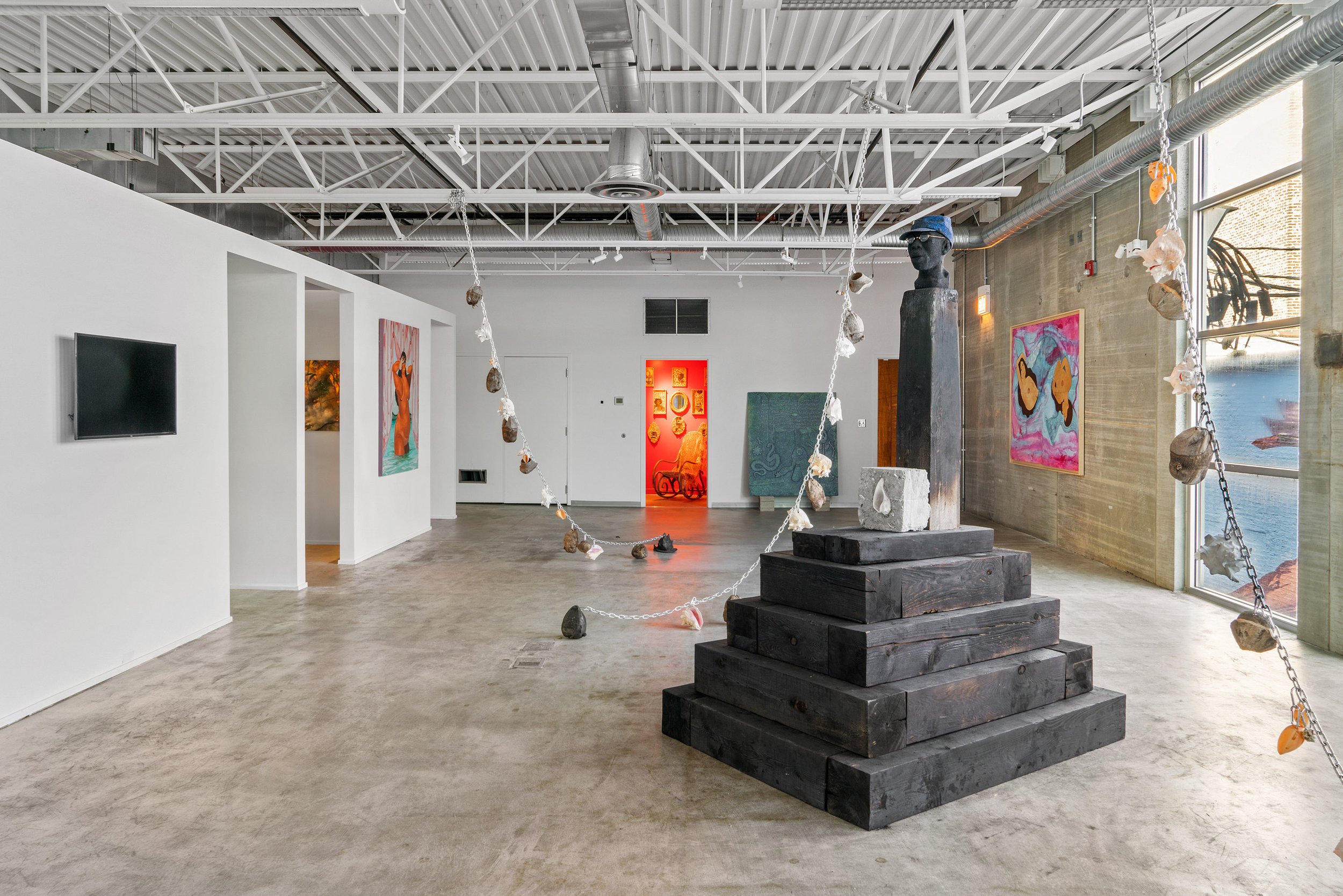RADCLIFFE BAILEY
Radcliffe Bailey’s historically significant Windward Coast - West Coast Slave Trade (2009-2018) will be exhibited for the first time in Chicago. The sculptural installation includes the wooden piano keys from countless pianos that stretch and move in what appears to be undulating waves. A solitary black sparkling head, a recurring motif in Bailey’s work, emerges from a soundless sea. In the distance a sparkling black ship floats on the sea of piano keys. The roiling waves allude to the vibratory frequencies of music, the transcendence of music to transport us, and the forced journey across the Atlantic, the ancestors who traversed the Middle Passage– those who came before and those who might not have made it.
Also on view in the exhibition is Monument to the Known (2021) which employs a black sand plaster head– a recurring motif in Bailey’s work. The head might be a stand-in for the artist and/or representative of the everyman through whom this history flows. The figurehead is adorned with glasses and a Union Civil War cap. The monument is made with charred wood beams which speak to previous destruction, of homes destroyed in flames, and a tabby concrete block, an early building material used in the coastal South produced largely by slave laborers who would have converted oyster shells into concrete. Enshrined in this concrete is one gorgeous solitary conch shell – the kind you might hold up to your ear to hear the whisper of the sea, a memory of the crashing tide which bore us across oceans to this place today.
Radcliffe Bailey (b. 1968, Bridgetown, NJ; lives and works in Atlanta, GA) is a painter, sculptor, and mixed media artist who utilizes the layering of imagery, culturally resonant materials, and text to explore themes of ancestry, race, migration and collective memory. His work often incorporates found materials and objects from his past into textured compositions, including traditional African sculpture, tintypes of his family members, ships, train tracks and Georgia red clay. The cultural significance and rhythmic properties of music are also important influences that can be seen throughout his oeuvre. An iconic work of Bailey’s, Windward Coast–West Coast Slave Trade, is composed of hundreds of discarded piano keys. This piece expresses his love of music, as well as the history, culture and spirituality contained in song. Here, the undulating keys are arranged to resemble the turbulent waters of Middle Passage. The waters of this work are physically embodied by music, an intangible entity carried over to new worlds and a trans-generational vestige of African heritages. Individual experience serves as a departure point in Bailey’s quest to excavate the collective consciousness of African diasporas and regional American identities. Found objects and imagery present seemingly bygone pasts as contemporary, neon Northern Stars that lead us through Bailey’s constellation of works on view, exploring and interweaving our shared histories. Often quilt-like in aesthetic, his practice creates links between diasporic histories and potential futures, investigating the evolution or stagnation of notions of identity.
RADCLIFFE BAILEY
Monument to the Known, 2021
mixed media including a black sand plaster head with glasses and a Union Civil War cap, charred wood beams, tabby concrete block
92 x 63 x 49 inches
Windward Coast - West Coast Slave
Trade, 2009-2018
piano keys, plaster bust and glitter
Dimensions variable

